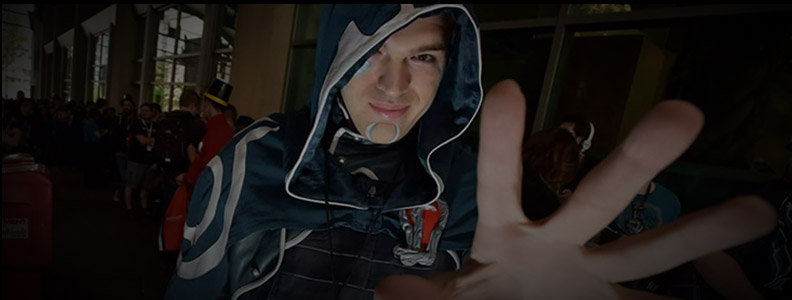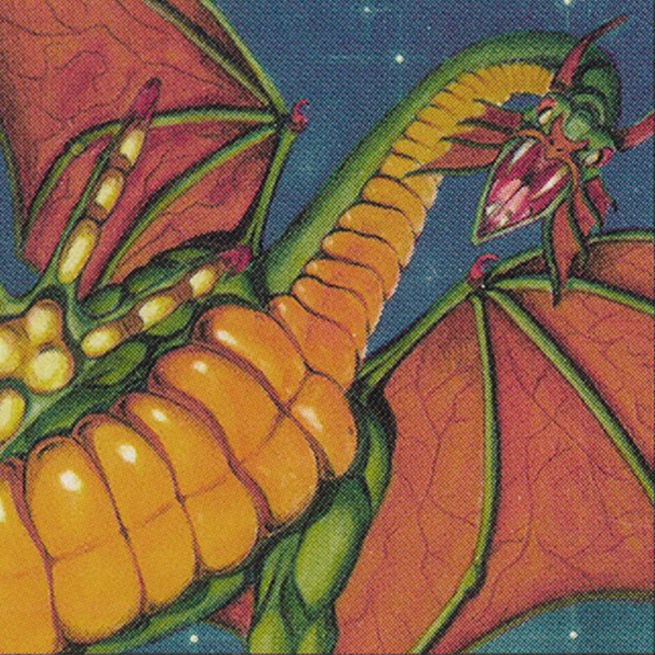Not all kids want to be actors, astronauts or athletes.
Some kids dream of making Magic: The Gathering cards.
And some of them make it happen.
Today we're proud to share our interview with Gavin Verhey, 28, Product Architect at Wizards of the Coast.
Gavin has worked on multiple products over the last 7 years, including leading design for Commander 2017 and 2018, and leading development for Battlebond.
Here's what Gavin told us.
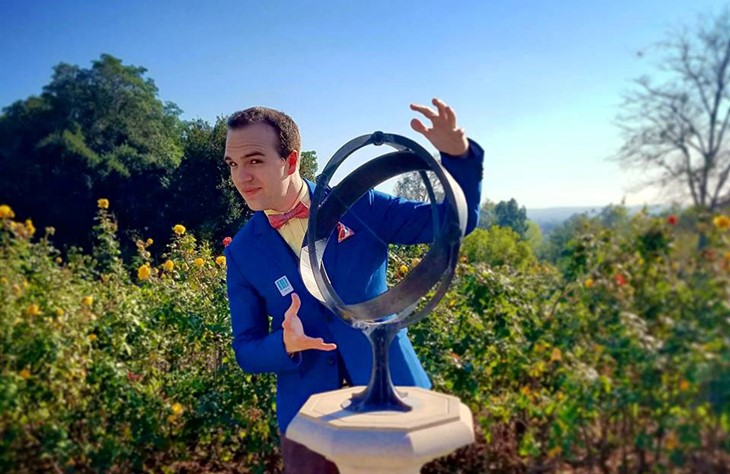
You wanted to work at Wizards since you were ten?
Yeah, it's totally wild. I was at a Wizards of the Coast game store, back when those existed, and the person behind the counter recommended Magic to me and my brother. My mom asked if this was something I'd be interested in, and that one answer I gave - of yes - might have been more life changing than anything I had said up to that point, or perhaps since, because Magic has crafted who I am.
Around what set was this?
Right around Planeshift, from the Invasion block, so that would have been in 2001. I started with the starter 2000 set and they had a little CD-ROM you put in, I remember playing through the tutorial in there and watching a CD with awesome clips from the Pro Tour. I thought it was the coolest thing, so it hooked me in right away.
Both me and my brother were homeschooled, and Magic was amazing because it really brought us closer and gave us this great thing that we could talk about and spend endless time building decks and trading cards, as we had our own collections that could not be touched. [laughing]
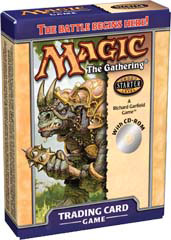
All cards in Starter 2000 were reprints from Sixth Edition, Portal and Starter. Source: mtg.gamepedia
So you kept on playing?
I grew up living in Seattle, which is fortunate, because that's where Wizards is. Back then we had these big Prereleases and Wizards employees would often be there. So, at the Odyssey Prerelease, Randy Buehler [At the time V.P. of R&D] was there.
I went up to Randy and said, 'Hey Randy, I want to work for you. I'm ready, let's do this, where do I start?' Randy looks at me really seriously, and says, 'Okay kid, you're going to need two things: the first is a college degree,' and my heart just sinks, I'm 11 years old and that is going to take forever.
But the second thing he says is, 'You're going to need to be someone we recognize and that we know is good, to be a pro player or something like this, because we often pick the people who we want to come and work for R&D'.
At that moment, I committed myself towards going Pro. I qualified for my first Pro Tour when I was 16-years-old, started college two years early here in the States, and then it all just basically went like how Randy told me if you can believe it or not.
That's film-worthy material.
It really is. If I told this story on television or in a film, I think a lot of people would think it's made up, but it's the dream that I always wanted, and now I get to live it.
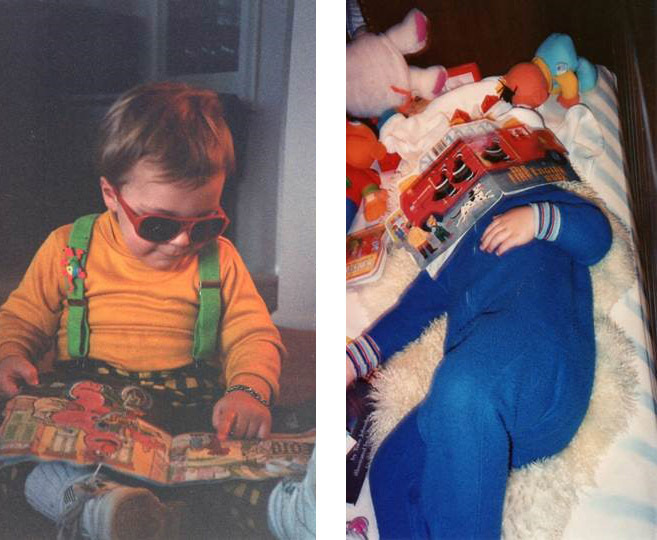
How has Magic changed since then?
The number of players playing Magic today is just an order of magnitude larger. I'm very nostalgic for playing through Invasion, Odyssey, Onslaught, Mirrodin" I will see a Kavu Titan or a Skirk Commando, or something like Bonesplitter, and it feel this really strong nostalgia. One of my goals as a designer is to create that, I want the players who start playing today to look back in 10 years and be like, 'Oh man, remember Guilds of Ravnica?'
Magic is a very interesting when it comes to nostalgia, because I could ask three different people if they were nostalgic about goblins, and while they would all say yes, one person's thinking about their Goblin King deck from back when they started playing in Alpha, one person's thinking about their Onslaught goblin tribal deck and the last is thinking about the goblin deck that they're playing in Standard right now.
If an 11-year-old kid came up to you and asked the same question today, would you give him the same answer Randy gave to you?
About two years ago I took the ferry to this tiny little island here in Washington. I was there for a totally unrelated reason, but I stopped by the game store and, of course, Friday Night Magic (FNM) was going on.
It looked nothing like your average FNM, these kids ranging from 10 to 15 years old are all playing with their homebrew decks, some of them have 80 cards and unsleeved, and it looks very much like Magic did when I started playing.

At the end of it, a kid and his Mom were talking to me and he asked, 'Hey, I want to come work for Wizards someday'. And he's probably about ten, eleven, twelve years old. 'How do I do it?' he asks. I gave him exactly the advice that Randy gave me, with a few updates, and that was this like unbelievable serendipitous moment. Inspiring that kind of thing is one of the greatest things about this job, you really get to change lives.
Do you take that into consideration when designing?
You know, when I was in the Philippines recently, they said something that stuck with me: Magic would be nothing without the gathering. So, absolutely, we're always trying to find ways to bring people together with Magic.
Battlebond, Conspiracy and Commander are good examples of this as new things that we've been trying to really get people to play together, because Magic is fun playing one-on-one, but the camaraderie is amazing. With Battlebond, we specifically designed it to have what we call 'high five moments'.
Is complexity the biggest obstacle on getting new players?
We've found that if someone wants to play multiple times, usually we've got them as a player for a really long time. It's a matter of getting people to stick with it, and that initial hurdle can be very hard. There're all these old cards, all these events and decks that have been played over time, and if you're starting out it can be overwhelming. So we do tons of work on our new player products to make them approachable and understandable.
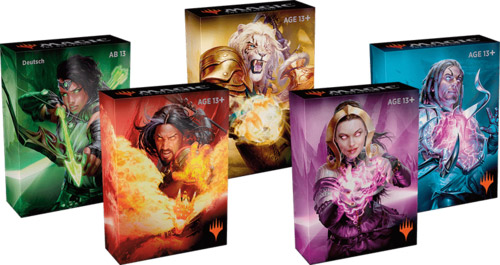
How do you measure how successful these new player products are?
One of the challenges is gathering data. A lot of online games can very easily tell how long people played for, who's buying what, among other things, we just don't get that. For example: Someone walks into Walmart, buys a Planeswalker deck, plays it a few times and then stops playing, and we never hear from that person again, we don't know that they existed. But we're doing a lot of studies to collect this data and learn what we can.
Do you do any kind of blind playtesting [testing products with people not familiar with the game?
Yes, we absolutely do. There are some companies we work with in Seattle that recruit people who had never played Magic (and there's a long list all the way from 'never played Magic' to 'not played any games'). We bring them in, hand them introductory products, and basically just walk out of the room and let them figure it out.
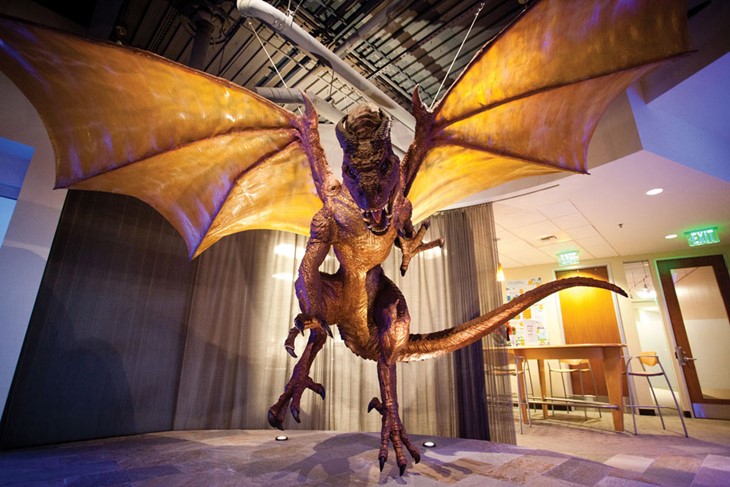
The things you see during these tests will just blow your mind. One time, there were people who didn't realize that your decks needed to be upside down. Since there wasn't anything instructing them to shuffle their decks and put it face down, they just figured it would be face up for whatever reason.
And then there was one game that I will never forget; this one player attacked with a Shivan Dragon, no blocks were declared, and he said, 'okay, take 17', and we're like, 'what?!' We later realized that they thought the expansion symbol - the W17 from the Welcome Deck 17 - overrode the power for whatever reason, so it was a 17 power creature. There's things you would never imagine, and that really informed us.
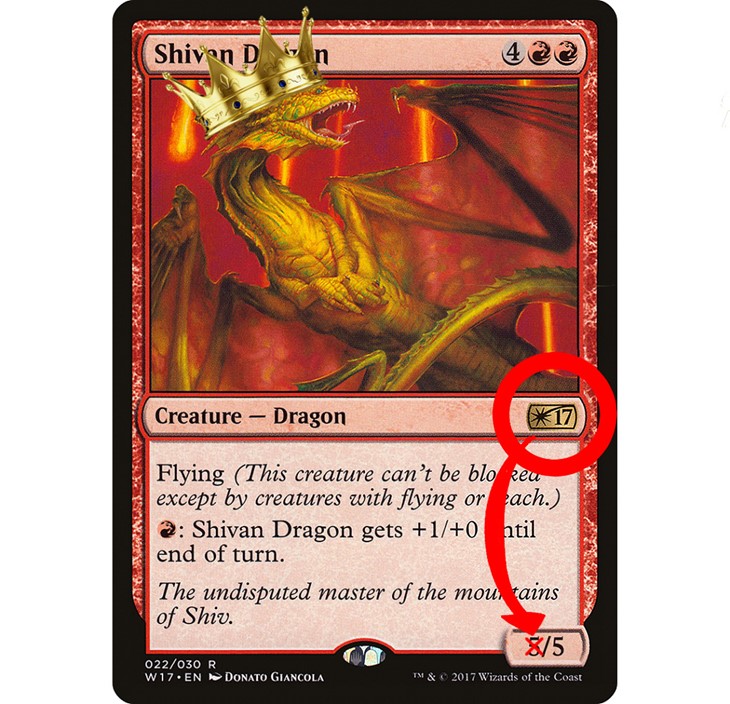
A crown was added for dramatic effect. One thing we also noticed is that cards like Divine Verdict, which destroy an attacking or blocking creature, are mega feel bad teaching cards. What would happen over and over is that a player would not attack, and the other player - being maybe more experienced - would remind them that they should attack if the opportunity arises, and when they did, they then casted Divine Verdict and killed off their creature, and it's like this horrible moment where they think that you just tricked them. And all these tiny incremental things we're always looking at improving.
So just to take a step back, what was your first position at Wizards?
I started at what now would be someone on our Play Design team, basically playtesting upcoming sets from a competitive angle and figuring out which decks and cards were strong and too powerful.
After that, I worked on a game we were launching called Kaijudo, and I did a brief stint on our brand team, where I learned about how we name products and how we work with other vendors, and that was a really great window into learning how the entire process at Wizards works.
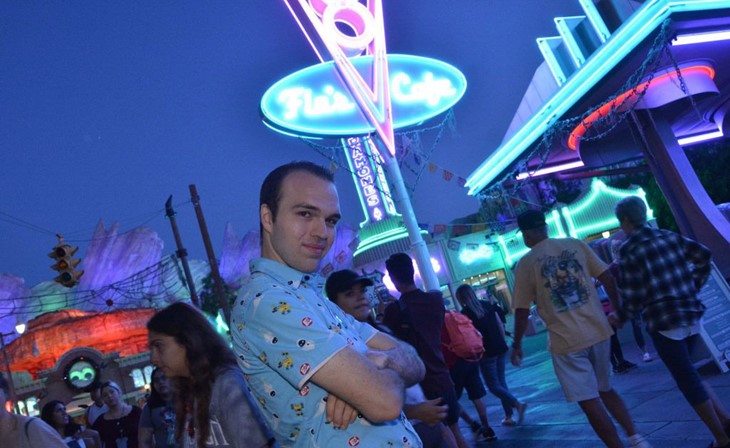
After that I moved onto a design role, coming up with early versions of sets. I'm now one of the main people on our Product Architecture team, where we figure out what our upcoming products are going to be. To give you an example of what we do, if a designer is working on the individual Commander cards, I might be the one telling them we should do tribal this year, and some characters we could go with. That said, I still do design work too.
Does having an overview of the entire product line help you connect them?
Yeah, we want to look across many years and figure out how they're all going to connect, and make sure we're not doing some themes too often. We also want some themes to play into each other, and we make sure that sets contain seed cards that set up for future themes.
If we're doing a graveyard set, maybe we want to make sure that a few sets earlier there is some cards that care about the graveyard. A unique thing about Magic design is that we work really far in advance, because we print everything up and ship it around the world, so everything from the next nine months of Magic is basically finished, can't touch it at all. I've been in meetings today already as far out as 2022, and in some years I'll talk about 2023, 2024, 2025.
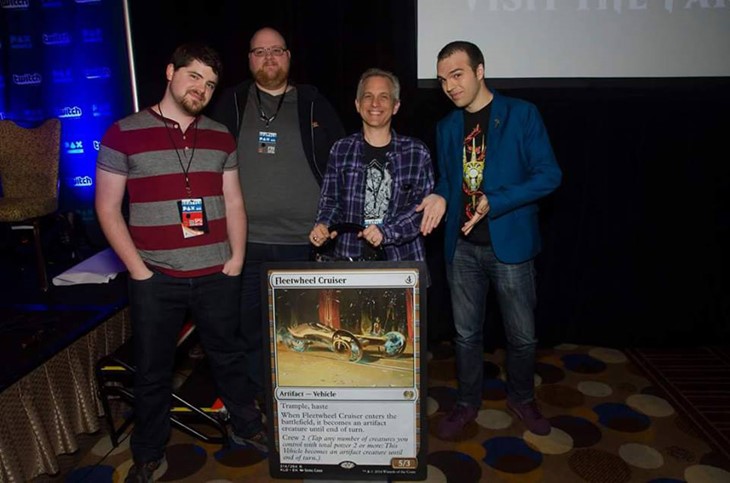
You're a bit of a time traveler, and it kind of works both ways, even though what we release is very much in our past, what players think about it is very much in our present. As feedback starts coming in on a set like Guilds of Ravnica, or Ravnica Allegiance or the Guild Kits, we now know what the players are saying and will apply it to future sets.
If you're always working years in advance, isn't the answer to current problems often late?
Right, and that's one of the hardest parts about my job. People will ask why haven't we done 'X', or fixed 'Y', and a lot of the time we have, it just hasn't made it out to you yet, and you just have to have to be patient, which is of course not always a very satisfying answer, but quite often that is the answer.
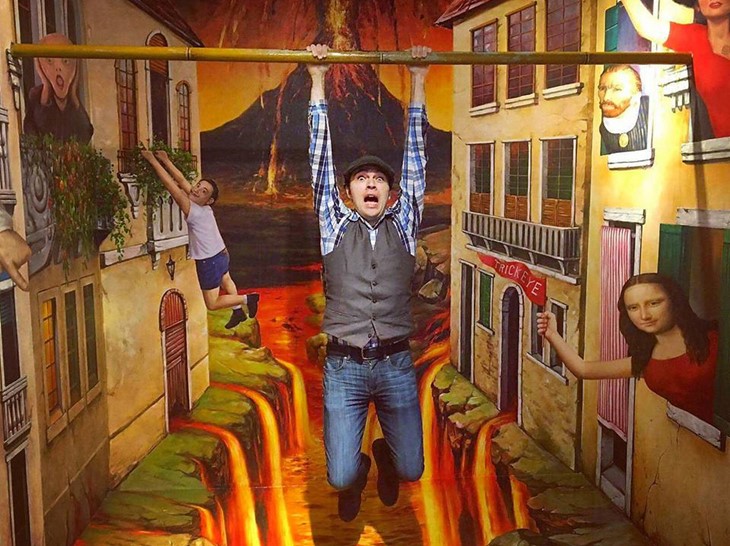
With the latest challenger decks you shortened the period it normally takes you to design a product. Is this something you'll do more often?
They're top level standard decks, but we have to be able to see what the real world results are before we can start doing them. Event decks were made following our normal timelines and ended up not being as exciting for players because they were built without that knowledge.
We made a bunch of compromises so we could make it work, but by squeezing it basically as tight as we possibly could, we got it down all the way to 5 months, which still sounds like a ludicrously long amount of time, but when you consider printing and shipping, all these things really add up.
So for Challenger Decks there's no decklist inside the insert for the product, and that's a thing we normally do, but we just had to cut it out to save time. While that sounds like one very minor thing, it's doing that two hundred times over to make sure that we can get the project as quick to players as possible.
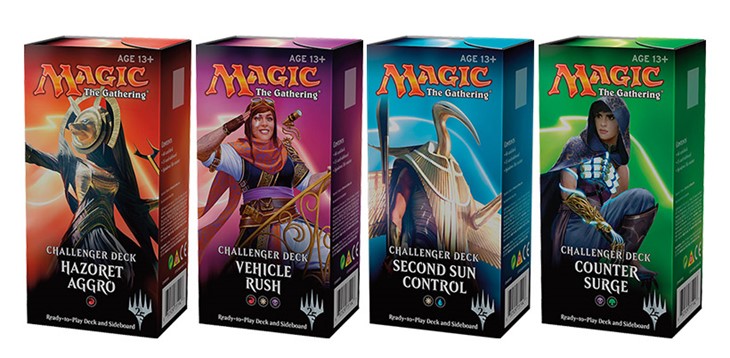
How reliably can you predict how the competitive decks will end up looking like?
First, the Play Design team [responsible for competitive play] is still new. We've only seen their impact on Standard for a few sets, they started in Guilds of Ravnica, and so far they're hitting it out of the park.
With that said, historically, we've been very good about figuring out what cards are going to be strong and the shape of archetypes. To give you an example, with Guilds of Ravnica we probably had two, three or four different control decks we're all playing with.
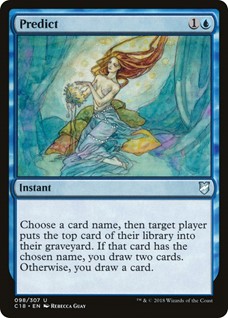
Which one of those ends up being played in the real world ultimately comes down to how the metagame shakes out, and that kind of nuance is very hard to predict internally, because there's 15 play designers and millions of Magic players. It's not that often when a card really surprises us, but every now and then it does happen.
I guess the ban hammer is always the last resort...
Banning cards in standard is really bad for a number of reasons. For one, we just sold you the cards, you should be able to play with them. The other reason is it messes up all the hard work we've put in, and kind of just takes things off the rails and sends them careening down a cliff.
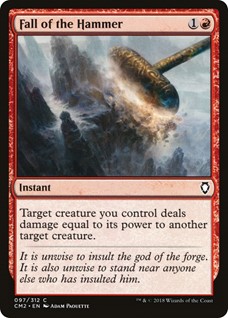
In Standard, when we started banning things like Emrakul, then all the testing we had done with it in mind is taken out the window, so whole chunks of the metagame are missing, and now there's decks that aren't balancing each other.
Banning cards that we missed feels slightly less bad because we didn't count for them anyway, but when there are cards we counted on, it drastically impacts how the metagame ends up looking. So yeah, it's bad for both the players and us.
You've been testing new products on smaller markets, how will this impact the type of products we might see going forward?
We talked earlier about how we learn about what's working and what's not. For a very long time, the answer was kind of just looking at anecdotal data, looking at sales, and try and figure it out, and we could do better than that.
This is the year 2019, and we have a lot of different tools at our disposal, and one of them is just trying products out and seeing what we learn from them.
It can be a little confusing to hear about a product that has a short run, or exists only in certain places, but you're going to see us do this. A great example is the theme boosters: These are 35 card packs that contain cards just from one color. We didn't know if players would like them, if the price and contents were right, if it should have more or less cards, and so we put them into Walmart's and ran a test.
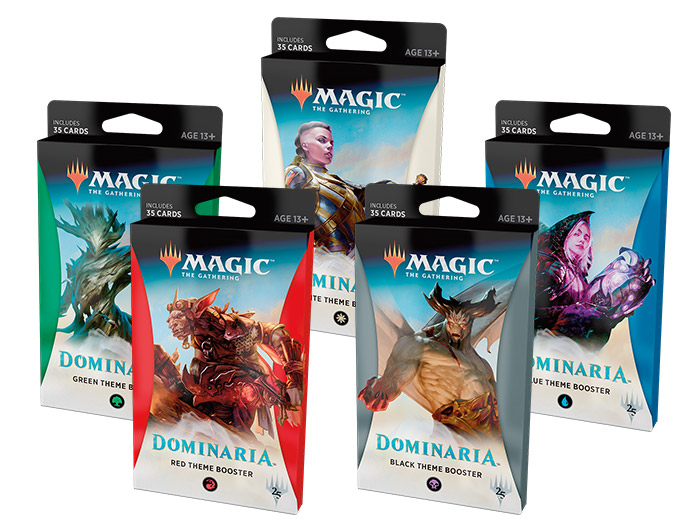
We collected data on how they did, how they sold and what players thought about them. Turns out things were pretty much good to go, so we just stepped in and did that for Guilds of Ravnica and Ravnica Allegiance, and now you can see them going forward. But if that initial test had gone poorly, we probably would have just pulled the plug and not done them. It's that kind of thing they're going to see us do.
One thing I ask of players is, as we test more and more things out, if something doesn't show up in your market, the answer is just that we have to put them in the best test environment possible, but know that if something is successful, then we will replicate it and do it on a large scale.
Will Magic Arena play a big part on that future?
Absolutely. I want to clarify for everyone: Paper Magic is stronger than it's ever been, and it's not going anywhere. We're going to do tons and tons with paper, but Arena is just off to an amazingly strong start, it's blowing the doors off and we want to support that too. https://www.youtube.com/watch?v=JrHjiXiRZlE There might be some unique stuff that comes down the pipe at some point for Arena; but even just looking at the tabletop space, we launched a Magic boardgame which it has no Magic-like gameplay, but uses the Magic flavor to create something.
You'll see us continue to expand and touch things that are different from the card game. If we look back in 20 years on today, I bet we will say that we were testing and learning so much, that we ended up with a lot of where we get to in 20 years from what we're doing right now.
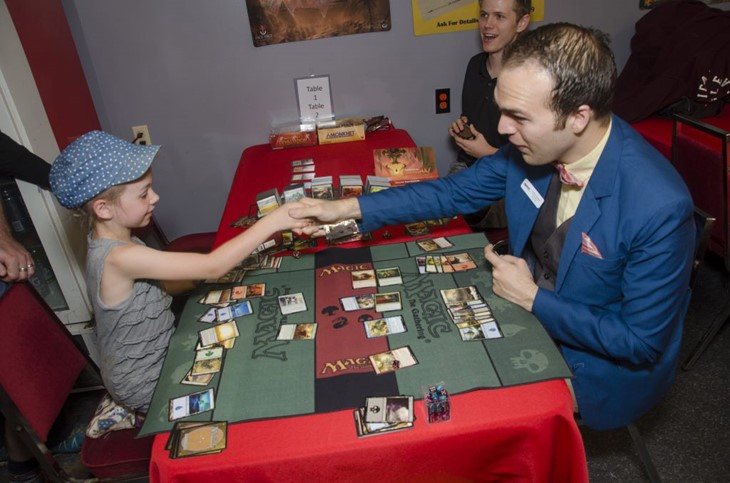
In a recent interview, you mentioned we're likely to see more Premium Products going forward, can you tell us more about this?
Earlier we talked about testing and learning, and we have this new channel of selling things directly to consumers. We've done a little bit of it with the Mythic Edition so far, and this is a chance for us to test some things out and see if there's an audience for it. It doesn't all have to be high-end stuff, some of it could be less expensive. This allows us to really get clear data on how the product did, so maybe if it goes really well on there, we launch it out to more people and put it in stores.I'll give an example: Let's say we live in a world where we never made Commander Decks, this never existed. Maybe what we would try is releasing a Commander product direct to consumer, see if people wanted it at all, and if the answer is yes, then we could make start making products worldwide and put them in stores. It's a great way for us to make a small quantity and just try it out and see if people are enjoying it or not.
So yeah, I think you will continue to see us experiment with selling things that way.
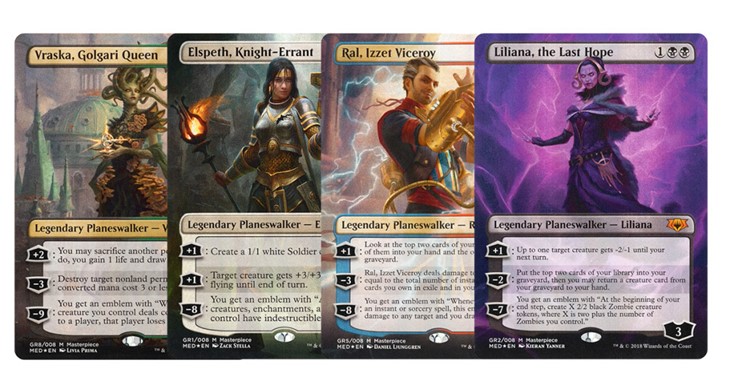
Magic has been around for 25 years, yet you don't seem to have it all figured out, you're trying out more stuff than ever before.
You know, our players have evolved as they've gotten older, as you and I have gotten older, and we want to make sure that our game evolves too. It'd be very easy to just repeat and do the same things that we've always done, but we're always asking ourselves questions and trying things out.
We don't want to get complacent, we want to keep innovating. One of the things that has made Magic so successful from the very beginning is that innovation, we were the first Trading Card Game, the first to do premium foil cards.
I remember the first time I saw double-faced card in Innistrad, my mind was blown! people were freaking out about how we could print a card on both sides, wondering how is it going to be played, and now it's just normal, so people wonder what's gonna be the next wild thing we're going to do.
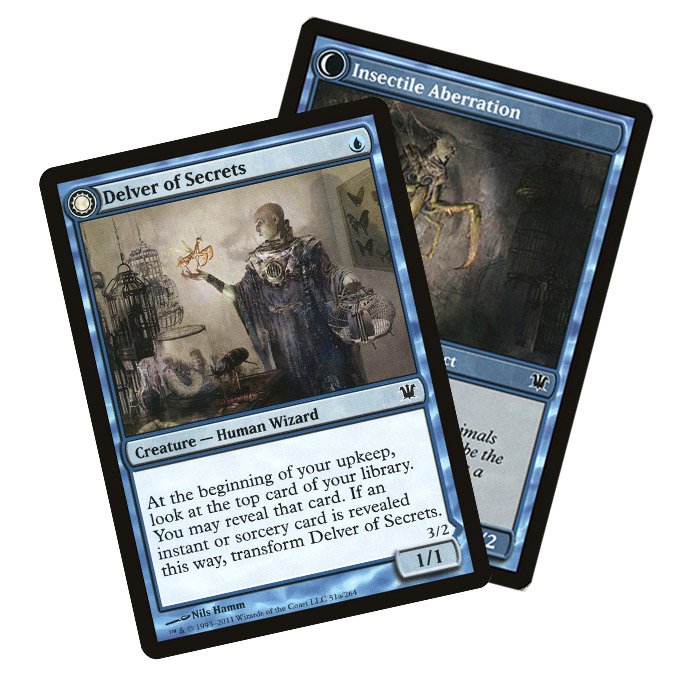
Would you say you're willing to take more risks?
Our CEO, Chris Cocks, talks about it as having castles and boats. The idea being that Magic is an amazing Castle, but we also want to be able to send out boats of exploration and see what else might be on the horizon.
I feel like we have a very safe Castle, we know we can release four sets a year and do great, but we are sending out a lot of boats to go and explore these other uncharted worlds, and that's where the risks are being taken.
It's understood that sometimes we're going to send up those boats and the crew members are not going to come back, [laughing] or they're going to come back and say, 'hey, there's monsters down there, let's not do that'. But sometimes we're going to find new and uncharted territory, and you got to take those risks to be able to reap those rewards.
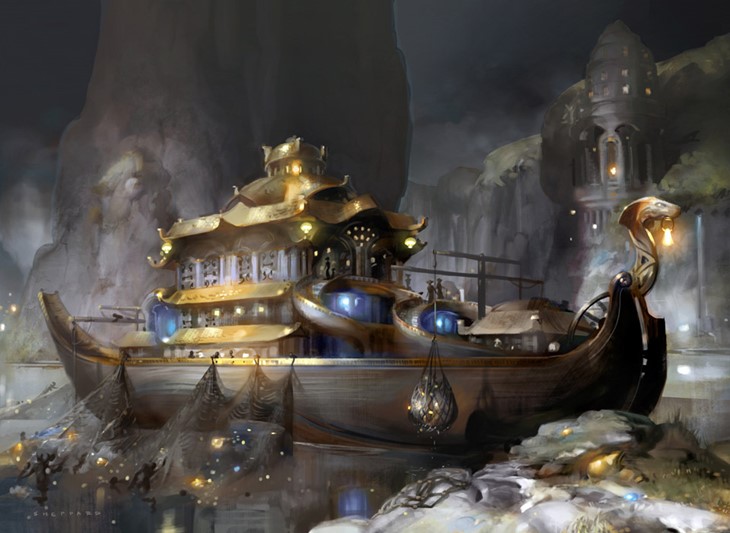
Now for a change of pace, can you name your favorite top 5 cards designed by yourself?
This is this is so hard for me, I can already tell you I'm going to miss a card that I love. I will give you my top five in no particular order.
First and foremost is Havoc Festival from Return to Ravnica. Havoc Festival and Ultimate Price were the first two cards I ever designed that made it to print and I'll always have a soft spot in my heart for that card, just a fun chaotic multiplayer card.
Next up, one card that most people probably never heard of, called Serene Remembrance. It's not a very exciting card, so why is this one important? Well, I told you I wanted to be a game designer at Wizards since I was a little kid, and so I started making a ton of Magic cards, and for my birthday parties we would make our own Magic sets for our hangout sessions and sleepovers.
After I got the job at Wizards, I came home to my parents for American Thanksgiving one year, and my Mom handed me a box with all the cards we had written up years and years ago when I was 10, 11, 12 years old. I looked through them and they were just ridiculous, there were cards like a land that could tap for two mana or draw two cards" a card that cost a single red mana and would deal five damage.... But I found this one, and it was Serene Remembrance (not by that name but by that effect).
I thought, since I was working on Gatecrash at that point, that this would be a really good fit, so I came back, pitched it, and it got printed exactly as I suggested, which almost never happens for a Magic card. So that card has a very special place to me.
Monastery Mentor is a card that has gone on to do amazingly powerful things and really means a lot, but it went through a very long process to get there. It got turned into an artifact, and then a blue enchantment, and then a four mana creature, then a two mana creature... eventually it ended up back at three mana, which is pretty unusual.
Number four: I'm a huge fan of Kamigawa, so I'm very proud of Yuriko. I finally got a Ninja Lord out there in Command 2018! I had to fight for her a little bit, but she's been a fan favorite which is awesome. I love ninjas and love throwing Kamigawa references.
My last one would have to be something from Battlebond, and it's so hard to choose a one specific card, but I guess if I did I would probably choose Stunning Reversal, which is a card that isn't played a ton, but it's just really unique.
I was trying to capture this feeling of how you come back from near death, like that moment where you're playing a fighting game and you grab the ledge, and you took 100 % damage, but can still come back and win. I think it captures it really well.
So what was that card you mentioned you loved but left out of this top 5?
Okay, so this is a card that has put so many smiles on so many faces, it's a Conspiracy where if you play with all the cards you drafted, all your lands tap for every color, and I just love this, the stories that come out of it are like nothing else in Magic, and as a game designer that's what we live for, and I try and do that with every card I touch.
As a player, what sort of playstyle do you tend towards, Control?
Yeah, I've always been a blue player, I love playing control decks. But one of the interesting things about working in an R&D is you have to be really good about playing anything.
One of the easiest ways to just incinerate hours of my life is to dust off some box in my collection, and inside will be some combo deck from six years ago, and I'll just spend like two hours goldfishing it because I just can't help myself, I love a good combo deck.
I've got many versions of Storm, Dredge, Mind's Desire and Heartbeat decks just in my closet, and yeah, I get to those and my time just gets incinerated. [Laughs]
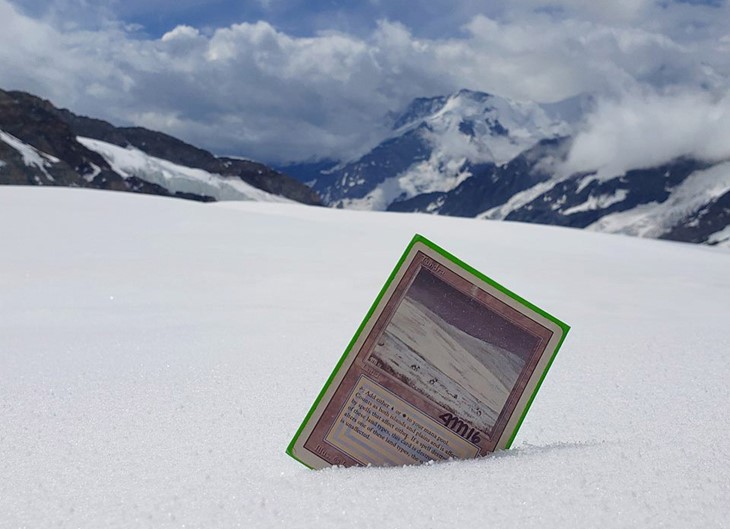
Biggest challenges for Magic today?
There's two that really come to mind. One is complexity, which we already touched on. The other is this: there are more things competing for your attention than ever before.
When Magic came out it was the first thing of its ilk, and there wasn't nearly as much entertainment out there competing for your attention. Now, Magic not only has tons of other games to fight against, from digital to tabletop, but one of Magic's biggest competitors is also stuff like Netflix, Hulu, and social media, and Magic is a time intensive thing.
We're trying to find ways to make sure that it fits in, and Magic: The Gathering Arena is a great example of that, where you could sit down and play a few games in minutes.
Also, as the community gets bigger and bigger, trying to address everything is difficult because information travels so fast and sometimes you're just going to make some people unhappy sometimes as you make others happy.
There's plenty of challenges for Magic, but the good news is I see a really bright future. My goal is to die of old age and Magic still being alive.
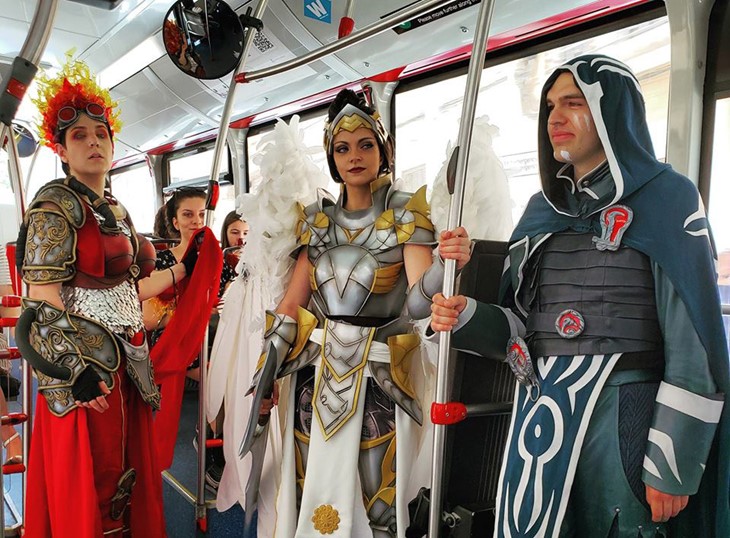
Any closing thoughts?
Magic's community means so much to me. Thank you all so much for all the discussions and comments, because I know at your core everyone just wants what's best for Magic.
I travel a lot, and almost everywhere I go I find people playing Magic, and we have this universal game where I can sit down and play against someone and neither of us knows each other's language, but we can play together and understand what we're saying, it's just amazing.
Thank you all for helping making Magic what it is today, because my job wouldn't mean anything without all of you out there. 2019 is a really exciting year, we've got some really mind-blowing stuff lined up and I can't wait for you to get your hands on it!
We want to thank Gavin for his time and kindness, and for his contagious passion for the game.
If you don't yet, we highly recommend you check out Gavin's Tumblr, where he often writes and shares some inspiring stories. And you can also find Gavin on Twitter
